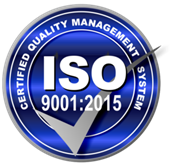
Fixed-Price Contracts in A&D: Balancing Innovation with Financial Prudence
As the world is still reeling from the aftershocks of the response to COVID-19, A&D supliers are becoming increasingly gun-shy with fixed-price contracts from the DoD. While the Pentagon is trying to stretch each dollar and ostensibly watch out for the taxpayer, the bulk of the risk is ultimately transferring to A&D OEMs and even further down the supply chain to lower tier suppliers. Further complicating the marketplace dynamics is the limited number of contractors and customers that can even engage in these sorts of Texas Hold ’em games. Contractors, generally speaking, can only sell to the US government. However, the US government needs the contractors to continue manufacturing A&D goods and weaponry. In these sorts of internecine conflicts, the losers are rarely the government or the contractors, but rather the US Citizens which both are meant to protect.
The Problem with Fixed-Priced Contracts
Fixed-priced contracts aim to contractually fix the price of a project to hedge against the risk of rising development costs further on down the line. Contracts can span several years and during that period, problems from suppliers, inflation, and changing market conditions can change the input costs of a program to the tune of millions if not billions of dollars. As a result, many A&D manufacturers are looking at fixed-price contracts with a healthy dose of skepticism and are seeing them as the beginning stage of negotiations rather than the bottom-line terms of the agreement. This presents a difficult challenge as opposing incentive structures find themselves in a game of chicken.
Government Incentives
In fixed-price contracts, the DoD and other executive branch agencies are making a concerted effort to stretch the budgets voted on by Congress every year. Recognizing the fact that there is a moral hazard for A&D companies to overrun budgets and pass avoidable costs onto the taxpayer, the US Government is attempting to place the risk back onto A&D OEMs. The government also has a vested interest in getting higher mileage out of each dollar as hot wars continue to heat up in Ukraine and Israel. However, there is also a moral hazard on the side of the DoD to strong-arm A&D companies to choose between risky fixed-price contracts and foregoing revenue due to unfavorable terms. Welcome to the current state of affairs.
A&D Incentives
A&D companies, on the other hand, see fixed-price contracts as burdensome as they carry with them a high likelihood of profit loss. On one hand, A&D companies don’t want to lose the contract to the next contractor who will bid a lower amount for the same product. On the other, A&D companies cannot bid so low that the risk of losing millions or billions of dollars occupies an unreasonably high likelihood of happening. This puts both parties in a bit of a pickle–without contracts, there is no A&D production. Without A&D production, the government has no way to exercise its role in defense.
The key here is for both sides to recognize that they’re on the same team. This sort of internecine warfare is ultimately distracting from the raison d’etre of the entire defense industry–to defend the public wellbeing.
The Middle Way
Fortunately, there is a middle way that can benefit all three parties in question here–A&D companies, the DoD, and the American people.
Cost-Plus Contracts
A cost-plus contract is a type of contract where the contractor is reimbursed for all allowable or defined costs incurred in the performance of the contract, plus an additional fee that represents the contractor’s profit. This type of contract is used when it is difficult to estimate the total cost of a project in advance due to uncertainties or when the project scope is not well-defined.
Cost-plus contracts can be beneficial for both the buyer and the contractor. For the contractor, it reduces the risk of incurring expenses that exceed the original estimate, as they are assured that all allowable costs will be covered. For the buyer, it can lead to a more flexible and adaptive project execution, allowing changes in scope without the need to renegotiate the total price. The key to this type of contract is price transparency and, given the complex nature of A&D supply chains, this is often easier said than done but is still possible.
Counter Offers
Many A&D companies are seeing fixed-price contracts as a starting point rather than the end terms of the contract in question. Companies like NorthropGrumman have counter-offered with the Space Force with different contractual terms with a measure of success. At the end of the day, both A&D companies and the DoD hold different trump cards which help lubricate the cogs of collaboration.
Economic Price Adjustment Clauses
EPA clauses allow for adjustments to the contract price based on changes in specified economic conditions, such as labor rates or material costs. In the aftermath of COVID responses that have caused a tight labor market and rising inflation, these clauses can be worth their weight in gold and can help give A&D manufacturers peace of mind. EPA clauses provide a way for companies to manage the risk of inflation or other economic factors that could impact the cost of fulfilling a contract. They also provide the DoD with the assurance that costs will not be artificially or unreasonably inflated beyond those that are actually reflected in the market.
Final Thoughts
Besides negotiating other contractual terms, there are other ways that A&D companies can mitigate the risk of fixed-price contracts. Partnering with the right suppliers and diversifying suppliers who can consistently deliver high-quality products can reduce the risk associated with lower-tier inputs. For companies looking to diversify suppliers of performance plastics, plated plastics and other lightweight A&D components, SAT Plating can help mitigate risk and deliver consistent, high-quality products.
SAT Plating offers comprehensive support spanning from R&D and prototyping, to large-scale manufacturing and seamless product delivery to our A&D partners. Contact our knowledgeable team today to begin discussing your project’s specific needs and discover how SAT Plating can assist in meeting your exact specifications. Our capabilities extend to accommodating programs that require as few as 1,000 parts or exceed 1+ million parts annually.






